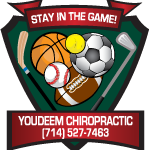Chiropractic
Facet Joints May Be Responsible for 15% of Chronic Low Back Pain Cases
The facet joints are located on the posterior side of each vertebrae and allow the spine to bend forward and backward and twist. In a recent experiment involving 206 chronic low back pain patients, researchers observed that diagnostic nerve blocks relieved back pain in 15% of participants, which suggests that facet joint dysfunction may be…
Read MoreLow Back Pain Common with Hip Impingement
Examinations of 158 patients with femoroacetabular (hip) impingement revealed that three in five also suffer from clinically significant low back pain, and that increased disability in one location is associated with greater disability in the other. The findings suggest that clinicians should evaluate both the hip and low back pain of patients presenting with either…
Read MoreManual Therapy Effective and Safe for Cervicogenic Cephalic Syndrome
Cervicogenic cephalic syndrome is a condition characterized by headaches and dizziness caused by dysfunction in the neck. A recent literature review found that manual therapies, such as those provided by doctors of chiropractic, are a safe and effective treatment option for patients with cervicogenic cephalic syndrome. Medicine, February 2021
Read MoreManipulation for Treatment of Lumbar Disk Herniation
A study that included 67 lumbar disk herniation patients revealed that six spinal manipulative therapy treatments spread over two weeks not only resulted in improvements in pain and function, but also in the curvature of the lumbar spine. Spinal manipulation is the primary form of treatment utilized by doctors of chiropractic for musculoskeletal conditions of…
Read MoreManual Therapy Aids in Management of Neck Pain
Among a group of 60 patients with neck pain, researchers observed that those treated with the combination of manual therapies and physiotherapy modalities experienced greater improvements in pain and disability than patients treated with physiotherapy alone. Doctors of chiropractic often address neck pain with a multimodal approach that may include manual therapies, modalities, exercises, and…
Read MoreSpinal Manipulation for Tension-Type Headaches
Tension-type headache patients treated with the combination of spinal manipulation and exercise experienced greater improvements with respect to headache frequency and severity than those treated with either myofascial release of the suboccipital muscles or exercise alone. Doctors of chiropractic commonly use a combination of spinal manipulation and specific exercises when managing patients with tension-type and…
Read MoreExercise to Address Increased Thoracic Kyphosis Benefits Neck Region
Thoracic hyperkyphosis is a term used to describe an exaggerated curvature of the upper back, which can affect the muscles and soft tissues in the neck, leading to cervical pain and disability. A study that included 24 thoracic hyperkyphosis patients revealed that corrective exercises were more effective for improving sagittal posture, cervical muscle strength and…
Read MoreNursing Students Suffer Work-Related Musculoskeletal Disorders
Questionnaires completed by 125 nursing students revealed that 104 (~83%) had musculoskeletal pain or discomfort in at least one body region, most often in the lower back, neck, and shoulders. The findings reveal that undergraduate nursing students are at greater risk of musculoskeletal disorders and there is a need for greater prevention and treatment options…
Read MoreAge and Low Back Pain Can Impair Balance
Proprioception is the body’s ability to sense where its various parts are in relation to one another for purposes of movement and balance. Examinations of 151 adults of varying ages with or without chronic low back pain revealed that chronic low back pain and advancing age are both risk factors for reduced proprioception. Doctors of…
Read MoreDoes Smartphone Use Contribute to Musculoskeletal Pain?
Questionnaires completed by 294 university students revealed that heavy smartphone users were more likely to experience pain in the neck, upper back, and hands/wrists, especially those who met the criteria for smartphone addiction. The findings underscore the importance of good posture when using electronic devices and seeking help if smartphone use interferes with one’s ability…
Read More
